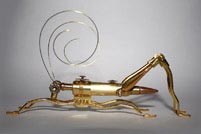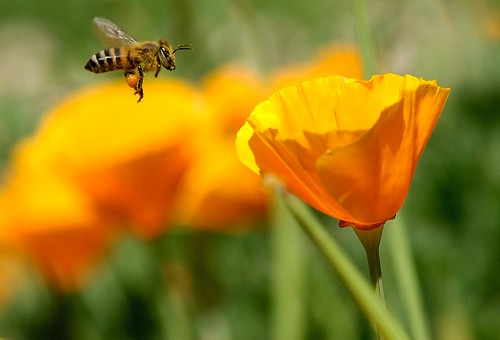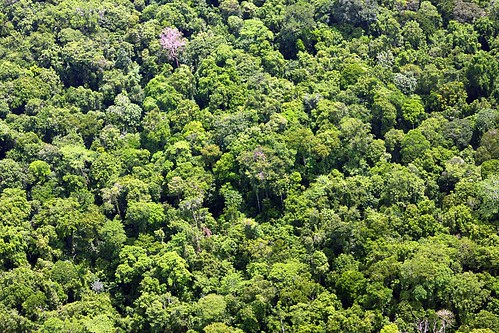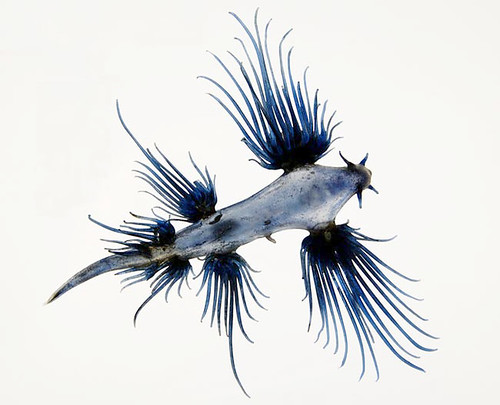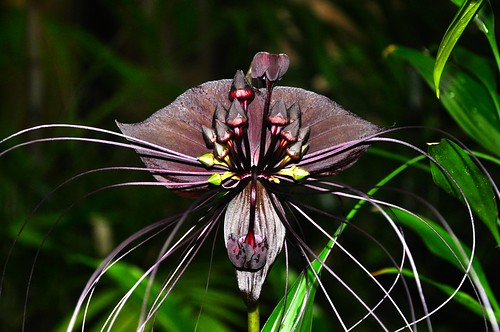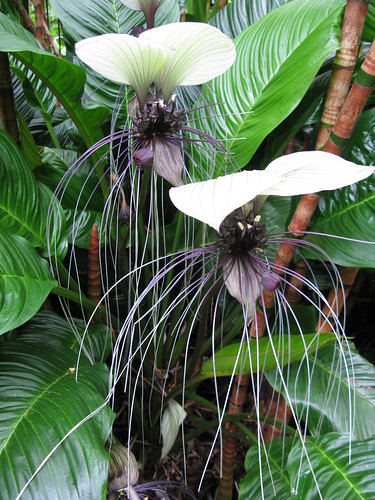I know I keep doing this, but LOOK at this flower. Does it even look like one?
This particular individual is Ceropegia dolichophylla (dolichós = long, phylla = leaf. There, now it's not just greek to you!). This genus has these distinctive flask-shaped flowers that are pitfall traps for small flies.
Have a look at some of the variation within the group:
Pollination in Ceropegia is thought to go something like this: Flies come to the flower, attracted by the scent. They fall into the base, and are trapped overnight, leaving the next day with pollinia (chunks of pollen) stuck to their mouthparts. Undignified!
In the case of C. dolichophylla, the type of flies primarily attracted are milichiid flies, many of which are kleptoparasites on the prey of spiders . This refers to the way these flies steal food from hardworking spiders, sucking the blood and juices of their prey out from under them.
The group of scientists working on C. dolichophylla found that instead of smelling like rotting meat (larvae food), they found that the dominant compound is very similar to those mainly found in insect glandular secretions, a.k.a sex or alarm pheromones. What does that smell like? In the words of the authors: "The floral scent of Ceropegia dolichophylla, as detectable by the human nose, can be described as sour-sweet with musky and sourish-metallic components."(1)
Since we don't know much about milichiid sex pheromone smells, they could not be sure which one C. dolichophylla is mimicking. They do think it's likely to be food, because the females are extending their mouthparts when they land, presumably to taste where that delicious smell is coming from.
So, yes. These flowers either smell like bug sex or death. How cool is that?
References:
1. A. Heiduk, I. Brake, T. Tolasch, J. Frank, A. Jurgens, U. Meve & S. Dotterl. (Oct 2010) Scent chemistry and pollinator attraction in the deceptive trap flowers of Ceropegia dolichophylla. South African Journal of Botany, Volume 76, Issue 4, Pages 762-769. DOI: 10.1016/j.sajb.2010.07.022.
2. J. Ollerton, S. Masinde, U. Meve, M. Picker & A. Whittington. (June 2009) Fly pollination in Ceropegia (Apocynaceae: Asclepiadoideae): biogeographic and phylogenetic perspectives. Annals of Botany, Volume 1o3, Issue 9, Pages 1501-1514. DOI:10.1093/aob/mcp072



